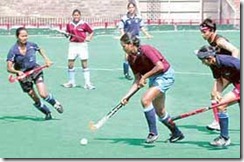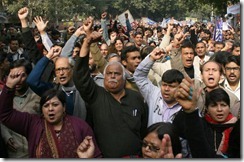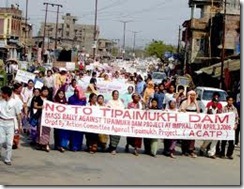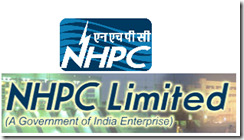By Shubhodeep Chakravarty
 New Delhi, Oct 27 : Fifteen-year-old Kuashi Behero is playing the best hockey of her life.
New Delhi, Oct 27 : Fifteen-year-old Kuashi Behero is playing the best hockey of her life.
From practicing on the patchy grass-covered field in her school back home in Mizoram to showcasing her talents on the astroturf at the National stadium, Behero says the feeling of playing on the same pitch as international stars is both daunting and exhilarating.
While many questions were raised on costs, deadline delays and shoddy standards of work at venues in the run up to the Commonwealth Games, schoolgirls like Behero, participating in the Nehru Junior Girls Cup, are certainly not complaining. After all, it's not everyday that they get to see, let alone play in a stadium, which is world class.
“Back home, the playfield is smaller though the comparison is unfair. Playing here has helped me familiarise with astroturf, running the full length of a hockey field and getting a feel of an actual stadium setting,” says Behero and adds that she likes to imagine the stadium jam packed with people shouting her name.
The exposure that participating schoolgirls are getting through the tournament is crucial.
But what really makes the experience count is that they are testing their mettle in the renovated stadium that has all the facilities required of a stadium of international standard, in place.
“In Holland, you can take your team to the stadiums, pay a nominal fee and make use of the grounds. No wonder their raw pool of talent is strong as well. While not the case here, such tournaments in this sort of a venue can help nurture stars of tomorrow,” said an official present here on Tuesday.
And potential stars don't just come from urban pockets of the country. With teams from certain tribal belts also participating, the magnitude of exposure widens further and, with it, the scope for emerging talent.
Teams from obscure places like Chote Udepur, Kawant, Thenzwal and many more have several players on their maiden visit to the capital and have coped well with what has been the biggest tournament of their young lives thus far.
“I want to play professional hockey but it would help if more of these turfs are set up back home. They are different and it takes a while to adjust but this has been an amazing trip for all of us,” says striker Aruna Sahu from Rourkela in Orissa.
While at approximately $75,000 (Rs 33 lakh) each, astroturfs may take a long time to trickle down to smaller centres in the country, the teenaged girls at the National Stadium are eager to soak in all that is on offer for the short duration.









 New Delhi: Writer-activist Arundhati Roy has once again stirred up the hornet’s nest with her comments on Jammu and Kashmir’s accession to the Union prompting the Centre to mull booking her for sedition.
New Delhi: Writer-activist Arundhati Roy has once again stirred up the hornet’s nest with her comments on Jammu and Kashmir’s accession to the Union prompting the Centre to mull booking her for sedition. 

